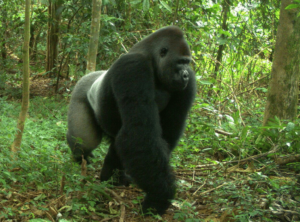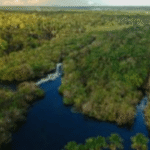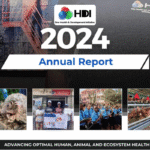
Type: Primates
Diet: Fruits and Herbaceous Vegetation
Average life span in the wild: 35-50 years
Height: 1.4 – 1.75m
Weight: 200 – 300 kg
Scientific Name: Gorilla gorilla diehli
Group name: Cross River gorilla
Cross River Gorilla (Gorilla gorilla diehli), the subspecies of the Western Gorilla (Gorilla gorilla) is the most western and northern form of a gorilla. It is restricted to the forested hills and mountains of the region around the Cameroon-Nigeria. About 300 km separates this species from the nearest population of western lowland gorillas (Gorilla gorilla gorilla), and by around 250 km from the gorilla population in the Ebo Forest of Cameroon. 2014 estimation suggests less than 250 mature Cross River gorillas remain hence, they are considered the world’s rarest great ape.
Analyses of cranial and tooth morphology, long bone proportions, and distribution demonstrate that the Cross River gorilla is a distinct subspecies of Gorilla gorilla. In comparison to the Western Lowland gorillas, they have smaller palates, smaller cranial vaults, and shorter skulls. Cross River gorilla is the largest living primate having small ears, joined and bare shaped brows, raised nostril margins, a bare black face, and chest. The chest is also barrel-shaped with relatively even hair. The average weight of adult males is 140 – 200 kg while the height is 1.65–1.75m. The adult females have an average weight of 100 kg while their average height is 1.40m.
Geographical distribution
The Cross River gorilla, like most gorilla subspecies, lives in a dense forest habitat that is uninhabited by humans. Their body size makes them require large and diverse areas of the forest to meet their habitat requirements. Their geographical distribution spans between the forested hills and mountains of the Nigeria–Cameroon border.
Diet
Their diet consists largely of fruit, herbaceous vegetation, liana, and tree bark which they find in their environment depending on the season of the year. They seem to prefer fruits but can feed on other sources of nutrition during the dry seasons, fruit scarce months.
Reproduction
Females mature at about 10 years while males mature at 15 years when they begin to mate. These species are shy and only a few details is known about their reproductive habits. They are polygamous with a single male dominant over multiple females. The gestation period is 9 months and they can have only one baby at a time – this they care for till it’s about 4 years old. Cross River gorillas exhibit certain nesting behaviors such as mean nest group size, style of the nest, location of the nest, and nest reuse patterns that are dependent on current habitat, climate, food source availability and risk of attack or vulnerability. A mean nest group size is made up of 4 to 7 individuals and the nest group size varies based on the location of the species. A group of Cross River gorillas consists mainly of one male and six to seven females plus their offspring. They are considered to have a lower number of offsprings than the highland Gorilla. This is assumed to be a consequence of the hunting rate in the lowlands and a higher infant mortality rate.
Behavior
Cross River gorillas are shy species and only fight back against possible threats from humans throwing sticks and clumps of grass. They have been observed to possess the ability to use tools and react to the presence of people with vocalizations.
Conservation Status
It is classified as critically endangered and also considered under-studied by the International Union for Conservation of Nature (IUCN). Also, most of the habitats of Cross River gorillas are now legally protected due to their conservation status. In the past, their habitats were severely affected by the drastic deforestation and human activities such as hunting, poaching, logging, agriculture, fuelwood harvesting, clearance of lands for plantation and exploitation of natural resources. However, over the last few years, conservationists have trained several workers to protect these species and their environment, and monitor them due to their critically endangered status.
Sources – Nigeria Wildlife Conservation Society; IUCN; Bergl et al, 2016











